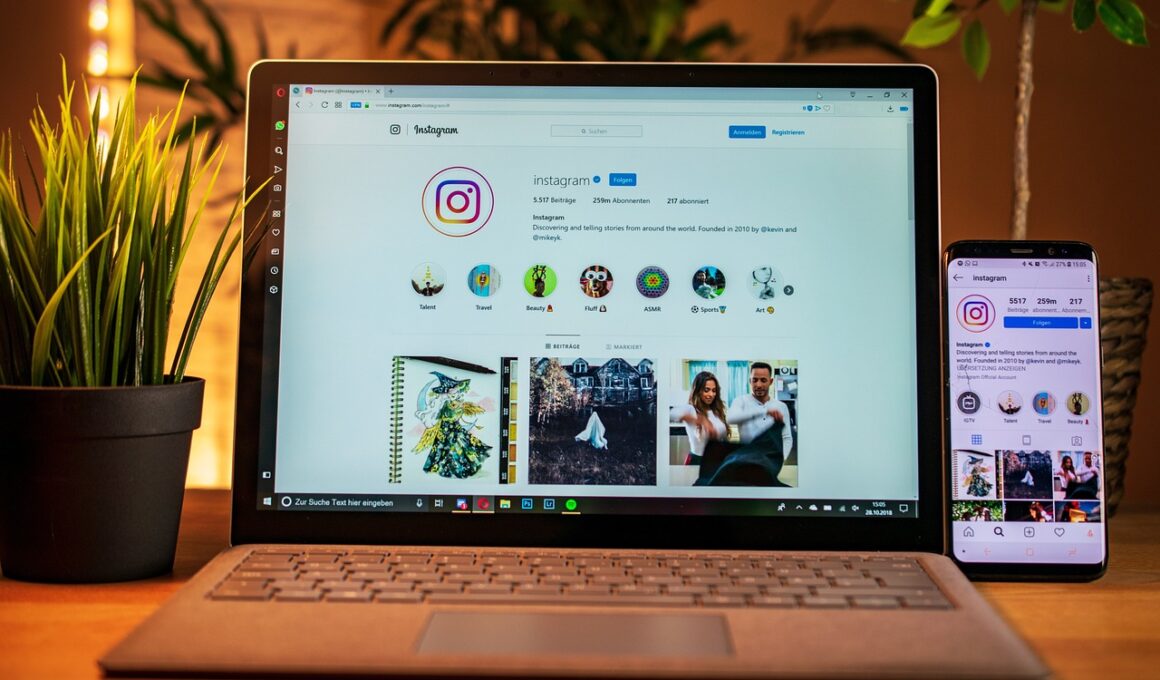Bridging the Gap: Storytelling Challenges Between Brands and Influencers
Storytelling plays a crucial role in marketing, especially in the realm of social media. Brands and influencers alike use narrative techniques to engage their audiences, create emotional connections, and drive customer loyalty. However, the challenges faced are numerous, as discrepancies can arise regarding brand voice, messaging consistency, and alignment of values. Ensuring that these narratives resonate with followers is fundamental, requiring an understanding of both the influencer’s style and the brand’s objectives. The relationship dynamics between a brand and an influencer can be complex, often involving negotiations that establish expectations on both sides. Additionally, influencers benefit from authentic storytelling that reflects their genuine experiences, which can conflict with branded content aiming for a curated image. The balance between authenticity and marketing often proves tricky to navigate, complicating how stories are told. Ultimately, the most successful collaborations occur when both parties embrace a shared narrative vision that highlights the strengths of each, providing value to audiences while still achieving marketing goals. In this context, clear communication and a deep understanding of audience perception are paramount.
Authenticity and Brand Voice
One of the primary challenges in storytelling is maintaining authenticity while still promoting a brand effectively. Influencers must ensure their engagement strategies align with their personal style and beliefs without appearing disingenuous. Brands, on the other hand, want their messaging to reflect their core values while resonating with a broader audience. Mismatches between an influencer’s narrative approach and the brand’s image can lead to disinterest from followers. To address this, brands should engage influencers whose values and aesthetics naturally align with their own, fostering genuine storytelling that feels organic. Authentic storytelling ensures that the influencer’s audience perceives the collaboration as credible, maintaining trust and engagement. Strong partnerships are built when both influencers and brands agree on a narrative that feels tailored to the influencer’s community. Clear expectations, open communication channels, and a focus on shared goals are essential to mitigating authenticity issues. By understanding audience expectations, both brands and influencers can shape compelling narratives that capture attention, create emotional connections, and encourage audience action. Collaborative storytelling drives results that benefit both brands and influencers, creating a win-win scenario.
The achievement of impactful storytelling is deeply rooted in understanding target audiences, which creates another layer of complexity. Both brands and influencers must navigate different demographics, interests, and preferences to craft narratives that resonate well. This requires extensive market research to comprehend audience behavior and preferences. Brands often have detailed consumer insights, which can help influencers tailor their narratives. Conversely, influencers possess a unique understanding of their followers through personal interactions, insights gained from analytics, and ongoing engagement. When both parties share their insights, they can develop a potent visual and narrative experience that holds significance for viewers. Moreover, this collaboration can yield innovative storytelling methods that break traditional molds. It is essential to integrate feedback loops and stay agile during the content creation process, enabling both parties to adapt as needed. When influencers have the creative freedom to shape a brand’s narrative while being guided by the brand’s objectives, the combination brings forth refreshing storytelling that captivates audiences and evokes strong emotional responses. Balancing collaboration and artistic license is vital to unlocking new storytelling potential.
Another significant challenge arises from the need for consistent messaging across various platforms. Each social media platform has its own unique culture, audience, and mechanisms, which can sometimes complicate storytelling efforts. Influencers are adept at tailoring their messaging to suit the platform they are using, whereas brands may struggle to maintain coherent brand identity while adapting their stories. This inconsistency can lead to audience confusion or brand alienation. Hence, influencers should work closely with brands to strategize storytelling techniques that fit different social channels while preserving essential brand identity. Cross-platform strategies must align yet comprise nuance in execution, allowing for flexibility in narrative structure. For instance, a compelling TikTok storytelling approach may not translate well to Instagram Stories, requiring a fresh perspective. To overcome such barriers, brands should consider co-creating content with influencers, combining both the brand’s vision and the influencer’s organic flow, paving the way for seamless content across platforms. Achieving cross-platform consistency not only solidifies brand messaging but also maximizes audience engagement by making stories relatable, enhancing overall effectiveness.
The integration of metrics and analytics further complicates storytelling dynamics between brands and influencers. Metrics play a pivotal role in evaluating the effectiveness of campaigns and storytelling efforts; however, relying solely on analytics can sometimes overlook qualitative aspects such as emotional resonance and storytelling impact. Brands typically prioritize analytical insights to inform decision-making, while influencers may focus more on engagement and relationships they have with their audience. The challenge is reconciling these two perspectives to optimize campaign performance. This calls for a balance between quantitative measurements like reach and engagement rates and qualitative factors such as audience sentiment and connection. Brands need to be open to understanding that a successful campaign may not solely be defined by numbers but also by the emotional impact it generates. Creating a feedback mechanism through which influencers can share storytelling insights can encourage brands to adapt their strategies based on influencer perspectives. Moreover, fostering an environment where qualitative evaluations are valued alongside numerical data can help in achieving greater overall storytelling success.
Compliance and transparency regulations have become increasingly important in the influencer marketing landscape, adding another layer of complexity. Legal requirements dictate how brands and influencers communicate sponsored content, which can hinder creative flexibility. Storytelling often relies on crafting narratives that seamlessly integrate products; however, regulatory compliance may necessitate clear disclosures that can disrupt the flow of organic storytelling. Brands and influencers must navigate these legal boundaries while maintaining audience engagement, ensuring that transparency does not corrode storytelling authenticity. Well-defined guidelines on how sponsorships are communicated can help bridge the gap between compliance and creativity. Brands should collaborate with influencers to devise inventive ways to make disclosures feel natural and integrated within the storytelling context. Maintaining transparency not only fulfills compliance but fosters trust between the influencer, the brand, and their audiences. When storytelling transparently and authentically, audiences are more likely to engage positively with the content. Creative strategies that incorporate disclosure as part of the narrative enhance compliance while preserving the integrity of storytelling, ensuring campaigns are both effective and trustworthy.
Finally, emerging technologies and platforms continue to shape storytelling challenges in the digital age. Many brands and influencers are still navigating the best practices of new technologies such as augmented reality (AR) or virtual reality (VR), integrating them into their narratives. These innovative technologies offer tremendous potential for storytelling, providing immersive experiences that can evoke emotional responses. However, brands may face hurdles in skillfully incorporating such technologies that require additional resources, time, and expertise. Influencers who thrive in innovative storytelling must remain aware of their audience’s adaptability to new technologies, gauging whether their follower base is receptive to such changes. Continuous exploration and experimentation are essential for both parties to understand their audience’s appetite for innovation. Collaboration in these endeavors can drive significance, enhancing storytelling through technology. Brands and influencers can work together to develop creative, tech-enabled narratives that feel authentic and innovative. By embracing digital advancements, storytelling can gain new dimensions that capture attention, create engagement, and expand reach, ultimately fostering a more significant impact in the social media landscape.
The evolving media landscape significantly influences the nature of storytelling. With the proliferation of platforms and formats, both brands and influencers must adapt to changing audience preferences while remaining authentic. This adaptability, however, introduces new challenges in developing cohesive narratives that resonate uniformly across different formats. As a result, brands must be receptive to feedback and willing to iterate on their storytelling approaches depending on how audiences respond. Overall, the collaboration between brands and influencers is pivotal in overcoming these storytelling hurdles. By establishing trust, fostering clear communication, and leveraging each party’s unique strengths, they can successfully navigate these challenges, pushing the boundaries of creativity in the influencer marketing space. It is this dynamic relationship that ultimately enhances storytelling effectiveness, ensuring that powerful narratives can emerge, engage audiences, and drive meaningful connections.


